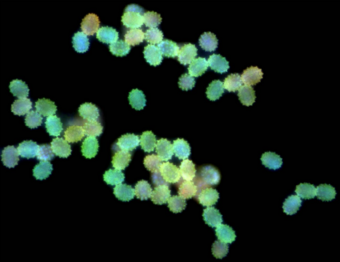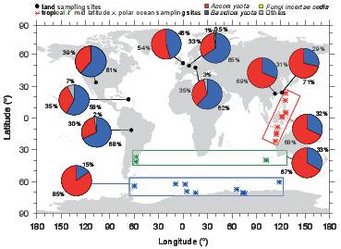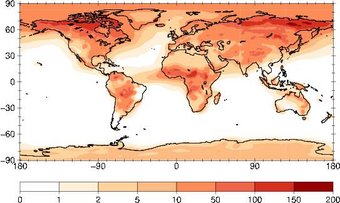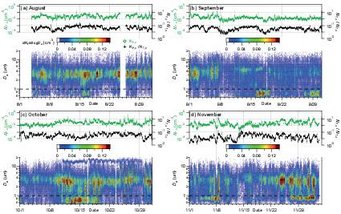Mainz Bioaerosol Laboratory - MBAL
The Mainz Bioaerosol Laboratory (MBAL) is a close cooperation of scientists at the Max Planck Institute for Chemistry and the Johannes Gutenberg University to jointly explore and characterize the climate, health, and environmental impacts of bioaerosols in the Earth System.
Key Topics:
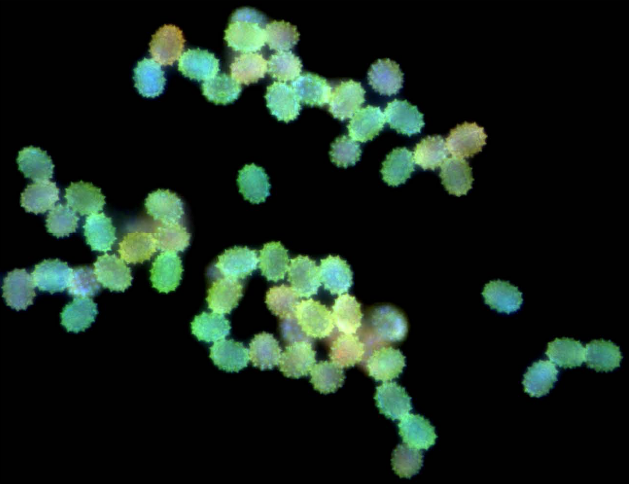
Fluorescence microscopy image from Matricaria chamomilla pollen. Pöhlker et al 2013, Atmos. Meas. Tech. 6, 3369–3392
- identity & diversity of bioparticles
- bioaerosol sources, transport & deposition
- water interactions, ice nucleation & bioprecipitation cycle
- plant pathogens & human allergens
Main Methods:
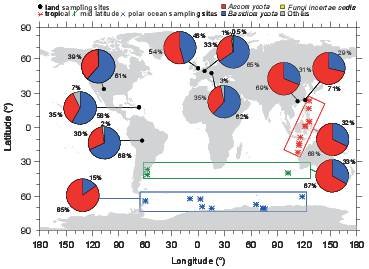
Biogeography for fungi: Fröhlich-Nowoisky et al 2012, Biogeosciences 9, 1125-1136
- DNA, RNA and protein analysis (Sanger Sequencing, Next Generation Sequencing (NGS), LC-MS)
- microscopy (X-ray, fluorescence)
- fluorescence detection & spectroscopy (UV-APS, WIBS, SIBS)
- environmental sampling (filter, impactor)
- geo- & bioinformatics
- atmospheric modeling
Participating groups:
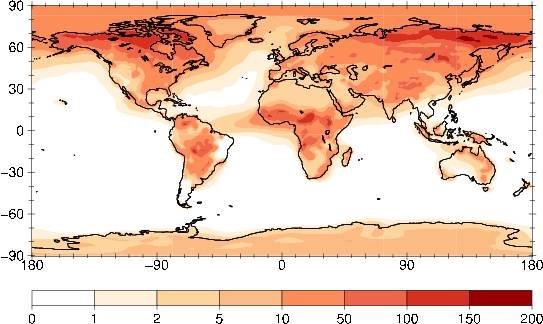
Model simulations of bacterial tracer concentrations: Burrows et al 2009, Atmos. Chem. Phys 9, 9281-9297
- Després Group, Institute of General Botany, JGU
- Fröhlich Group, Multiphase Chemistry, MPIC
- Pöhlker Group, Multiphase Chemistry, MPIC
- Thines Group, JGU & IBWF
Partner Groups:
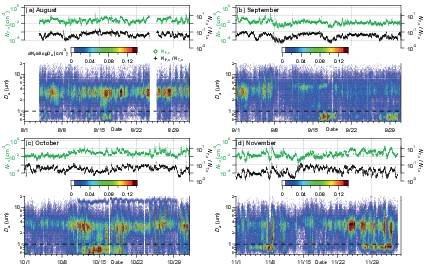
Time series of FBAP concentrations: Huffmann et al 2010, Atmos. Chem. Phys 10, 3215-3233
- Gunthe Group, Department of Civil Engineering, Indian Institute of Technology Madras, Chennai
- Huffman Group, Department of Chemistry & Biochemistry, University of Denver
